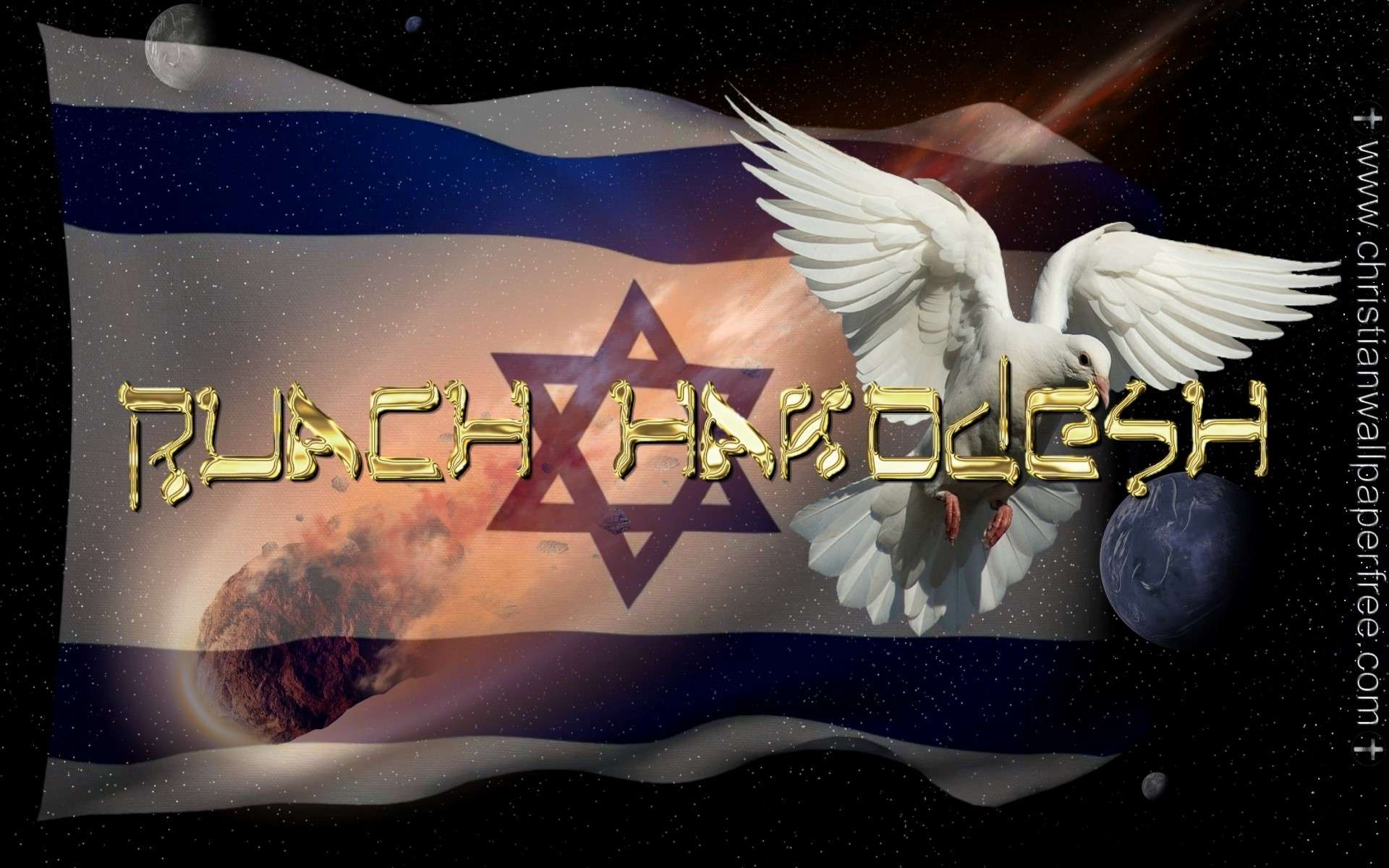Ruach HaKodesh, often translated as “Holy Spirit,” is a foundational concept in Judaism. It represents God’s active presence in the world and within individuals, driving creation, inspiring prophecy, and guiding moral behavior. It’s not simply a “spirit,” but rather the very breath and life force of God. This article explores the rich meaning of Ruach HaKodesh, tracing its understanding through Jewish history and highlighting its contemporary relevance.
Exploring the Essence of Ruach HaKodesh
Ruach HaKodesh, while often equated with the Christian “Holy Spirit,” carries distinct meanings within Jewish tradition. It’s less about a separate entity and more about God’s active energy, the divine breath permeating all of existence. This section delves into the meaning behind the words, emphasizing the Jewish understanding of one indivisible God.
Defining “Ruach” and “Hakodesh”
The term “Ruach HaKodesh” combines two powerful Hebrew words. “Ruach” (רוּחַ) signifies breath, wind, or spirit – the essence of life itself. “Hakodesh” (הַקֹּדֶשׁ) means “holy,” denoting a sacred connection. The combined term “Ruach HaKodesh” emphasizes a relationship with holiness, not possession by a holy being. It’s the holy spirit, not the spirit of a holy being. This subtle distinction reinforces the core Jewish belief in one God – complete and indivisible – avoiding any notion of separate entities like the Christian Trinity.
Ruach HaKodesh in the Hebrew Bible
The Hebrew Bible (Tanakh) provides numerous examples of Ruach HaKodesh at work. In Genesis 1:2, it hovers over the waters before creation, a vital force initiating life. King David, in Psalm 51:11, pleads with God not to take away His Holy Spirit, suggesting a link between Ruach HaKodesh and both emotional and spiritual well-being. Isaiah 63:10-11 describes the Israelites grieving God’s holy spirit, suggesting that human actions can impact our connection with the divine. These passages illustrate the diverse roles of Ruach Hakodesh: its power in creation, its influence on our emotional lives, and its role as a bridge between humanity and God.
Rabbinic Interpretations and Evolving Understandings
Throughout history, Jewish scholars have explored the meaning of Ruach HaKodesh, examining its role in prophecy, divine inspiration, and ethical living. The Talmud and Midrash, collections of rabbinic teachings, emphasize that Ruach HaKodesh is an attribute of God, an extension of God’s essence, and not an independent being. While these texts sometimes employ metaphorical language, personifying Ruach HaKodesh to aid understanding, this shouldn’t be interpreted as a literal belief in a separate entity.
A Distinctly Jewish Perspective
It’s crucial to understand that the Jewish understanding of Ruach HaKodesh differs significantly from the Christian concept of the Holy Spirit within the Trinity. Judaism firmly maintains the belief in one indivisible God, rejecting any notion of shituf, the ascription of partners to God. This fundamental difference distinguishes the two faiths.
Ruach HaKodesh in Contemporary Jewish Life
Ruach HaKodesh is not merely an ancient concept; it continues to resonate within modern Judaism. Many perceive it as a wellspring of inspiration, a guide for ethical decision-making, and a potent reminder of our connection to something larger than ourselves. It might be the creative spark igniting an artist, the passion for justice fueling an activist, the quiet strength sustaining us through adversity, or the profound sense of community in shared experiences. Perhaps it’s even sensed in moments of awe and wonder in nature. Recognizing and appreciating the potential manifestations of Ruach HaKodesh in our lives encourages ongoing personal reflection and spiritual exploration. While centuries of study and interpretation inform our current understanding, some scholars suggest that Ruach HaKodesh is a concept that continues to evolve. Ongoing dialogues and varied perspectives within Jewish thought indicate that our comprehension of this divine force is probably still unfolding. This dynamic nature invites continued exploration and a deepening connection with this essential facet of Jewish tradition.
Ruach HaKodesh in the Bible: A Deeper Dive
The presence of Ruach HaKodesh in the Hebrew Bible is interwoven throughout the text, though understanding it requires more than just locating the words on the page. It’s about grasping the underlying concept and deeper meaning.
Understanding the Term
The Hebrew word “Ruach” can mean breath, wind, or spirit—an invisible yet powerful force, like the very air we breathe, but on a grander, spiritual scale. “HaKodesh” means “holy,” so “Ruach HaKodesh” refers to the Holy Spirit, the breath of God, the sacred essence connecting us to the divine.
From Creation to Prophetic Inspiration
From the very beginning, in Genesis 1:2, Ruach HaKodesh is depicted as a dynamic, life-giving force, “hovering over the waters” and bringing order from chaos. This illustrates God’s active presence from the first moments of creation. Throughout the Hebrew Bible, Ruach HaKodesh manifests in various ways. In Psalm 51:11, King David implores God not to take away His Holy Spirit, demonstrating the vital connection to the divine that sustains and guides. Isaiah 63:10-11 describes the people grieving God’s spirit, suggesting that human actions directly impact our relationship with this divine presence. Perhaps most prominently, Ruach HaKodesh appears in the narratives of the prophets, empowering them with divine inspiration to deliver God’s messages.
Ruach HaKodesh in Everyday Life
Jewish scholars, through rabbinic literature, explain how Ruach HaKodesh influences daily life. It may guide ethical decisions, ignite creativity, or foster resilience in challenging times. Some believe that even today, we can connect with Ruach HaKodesh through acts of kindness, through pursuing justice, and through creating beauty in the world. Uncover the complexities of claiming property ownership in the Badger State by exploring the intricacies of squatters rights Wisconsin.
Jewish and Christian Perspectives
While both Jewish and Christian traditions acknowledge the Holy Spirit, their understandings diverge. Christians often view the Holy Spirit as a distinct person within the Trinity, while Judaism emphasizes God’s oneness. Ruach HaKodesh, in Jewish thought, is an attribute, an extension of God’s power, not a separate entity.
An Ongoing Exploration
Our understanding of Ruach HaKodesh is dynamic and evolving. It’s a concept that invites ongoing exploration and offers continuous opportunities to find new meaning. Ultimately, it prompts us to explore our spiritual paths, to question, and to seek deeper connection with something greater than ourselves. Delve into the fascinating story of Symbria Wright and her impact.
What Does Ruach Hamashiach Mean?
Ruach Hamashiach, a term rich in theological significance, links the concept of the Holy Spirit with Jesus, understood as the Messiah. This section explores the meaning of “Ruach” and “Hamashiach,” examining how they intertwine in Messianic Jewish thought.
Understanding “Ruach”
“Ruach” (breath, wind, spirit) represents the life force, the animating energy within all living things, including God. In Genesis 1:2, God’s ruach hovers over the waters, bringing creation into being. This same ruach describes our spirit, the essence of what makes us alive and human.
Ruach HaKodesh: God’s Active Presence
“Ruach HaKodesh” (Holy Spirit) is God’s active presence in the world, empowering individuals and inspiring prophecy. It is not a separate being, but an essential part of God, an extension of God’s very self.
Ruach Hamashiach: The Spirit Connected to the Messiah
“Ruach Hamashiach” connects God’s active presence (Ruach HaKodesh) specifically to Jesus, understood as the Messiah. For those who follow Jesus, it represents God’s empowering presence working through him.
Ruach Hamashiach in Messianic Jewish Thought
Messianic Judaism, a perspective combining Jewish tradition with belief in Jesus as Messiah, attributes special significance to Ruach Hamashiach. It’s not merely God’s presence; it’s the indwelling of the Messiah’s spirit within believers, enabling them to live in accordance with his teachings.
Diverse Perspectives and Ongoing Exploration
It’s important to acknowledge that the concept of Ruach Hamashiach is not universally accepted within Judaism, and interpretations of the Holy Spirit and its relationship to the Messiah vary across Jewish traditions. Even within Messianic Judaism, interpretations of Ruach Hamashiach may differ. Some emphasize empowerment, others ethical implications, and still others a deeper connection with God. Ongoing study and interpretation remain crucial for navigating the complexities of this concept.
What is the Difference Between Ruach Elohim and Ruach HaKodesh?
While both ruach Elohim and Ruach HaKodesh relate to the divine spirit, they represent distinct nuances in how we understand God’s presence and power. This section clarifies the distinctions between these two important concepts.
Understanding Ruach
The Hebrew word ruach is foundational to both terms, encompassing “breath,” “wind,” and “spirit.” It embodies the invisible yet potent life force present within all living things and, importantly, within God.
Ruach Elohim: God’s Power in Action
Ruach Elohim, often translated as “Spirit of God,” represents God’s active power at work in the world. It empowers individuals for specific purposes, such as prophecy, leadership, or artistic creation. A prime example is Bezalel, who was filled with ruach Elohim to construct the Tabernacle (Exodus 31:3). This signifies a focused intervention, enabling individuals to fulfill divinely appointed roles.
Ruach HaKodesh: A Sacred Connection
Ruach HaKodesh, commonly translated as “Holy Spirit,” refers to the abiding presence of God’s holiness within us. It guides us towards righteousness and spiritual growth, acting as a constant inner compass for ethical behavior and understanding God’s will. Unlike ruach Elohim, which might be granted for specific tasks, Ruach HaKodesh suggests a continuous state of spiritual alignment with the divine.
Two Expressions of One Divine Source?
Some scholars propose that ruach Elohim and Ruach HaKodesh are not separate entities, but rather different facets of the same divine spirit. Ruach Elohim might be likened to a focused beam of light empowering specific actions, while Ruach HaKodesh is the diffuse glow of that same light, providing constant warmth and illumination. This ongoing theological discussion highlights the complex relationship between these two concepts.
Conclusion
Both ruach Elohim and Ruach HaKodesh reveal the active and abiding presence of the divine in our lives. They guide, empower, and sanctify us on our spiritual journeys. Ongoing exploration of these concepts enriches our understanding of the multifaceted nature of the divine spirit and its role in our lives.
- Unlock Water’s Symbolism: A Cross-Cultural Exploration - April 20, 2025
- Identify Black and White Snakes: Venomous or Harmless? - April 20, 2025
- Unlocking Potential: Origins High School’s NYC Story - April 20, 2025














